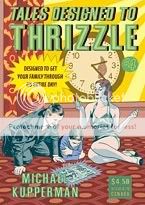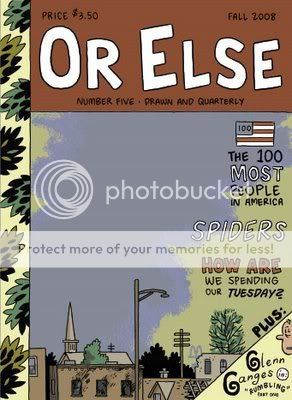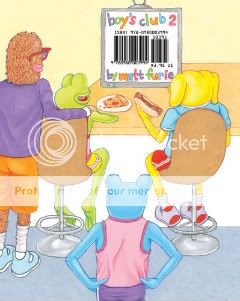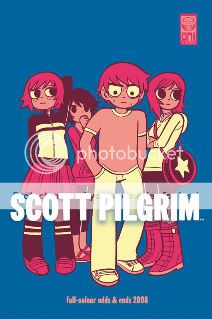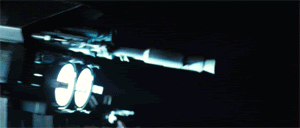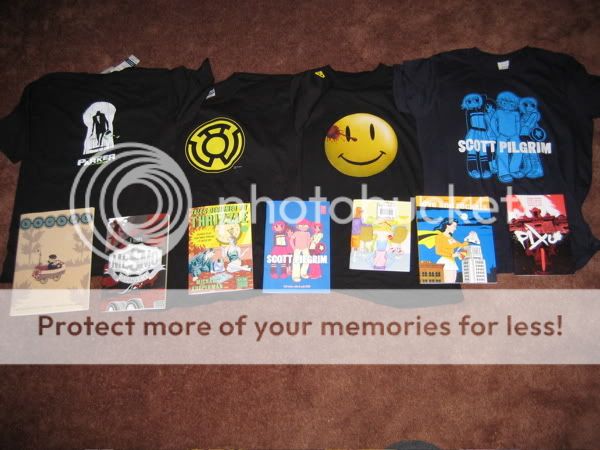Watchmen
Alan Moore, writer
Dave Gibbons, artist
DC Comics, 1987
416 pages
$19.99
Like half the nerds in America, I recently re-read this graphic novel, inspired to do so by the trailer for Zack Snyder’s upcoming movie adaptation. I feel much older than I did when I first read the book during my sophomore year in college, and much of what I appreciated about it then fails to impress me now…or perhaps “fails to impress itself upon me” is the better way to put it. Moore’s scripting, for example, seemed wildly sophisticated compared to the house-style comics of the ’90s with which I could then compare it, but comes across shopworn, even hokey to me now. All those panel transitions where what someone is saying in one place is placed in a dramatically/ironically appropriate caption box over something unrelated yet thematically linked in some other place! There’s one groanworthy bit in the Owlcave where Nite Owl says something about a reflection while we’re shown his reflection, and I liked the failed sex scene juxtaposed against the commentary for Ozymandias’s gymnastics routine better when it was Phil Rizzuto doing play-by-play for Meat Loaf in “Paradise by the Dashboard Light.” I mean, maybe it’s just that I’m sick of the fact that people like J. Michael Straczynski are still doing stuff like this 20-odd years later, maybe it was a total revelation then, but to me, this sort of neat thematic coincidence requires far more suspension of disbelief than just having guys run around in costumes. It feels emotionally artificial, which of course is the problem I tend to have the most with Moore’s rigorously, ostentatiously authored work.
Instead, what strikes me hardest here, what I don’t think I ever thought about all that much before, is how much power the story draws from its uniformly engaging sad-sack main characters. I think it’s here that Dave Gibbons’s contribution is at its most valuable, with his all but countless shots of heroes and do-gooders worrying, frowning, furrowing their brows, being uncertain. It must be noted that this is worlds away from the Identity Crisis-style vogue for angst and selfish over-emoting. All the characters in those “you’ll believe a man can cry”-type supercomics are just as 100% sure of their emotional experience as their relentlessly upbeat Silver Age counterparts used to be. Not so in Watchmen, where the primary mode of emotional interaction with the world is confused dismay. The mileage Moore can get out of this is almost inexhaustible. These aren’t emo Batmen, they’re Tony Sopranos and Seth Bullocks, idiosyncratic and troubling portraits of great physical strength and moral violence juxtaposed against tremendous emotional and psychological weakness. Their failures–and they spend pretty much the whole book failing–are hard to stomach, especially giving the truly impressive air of impending doom Moore creates out of snippets of current-events and vox-pop cutaways; we hope for their success even though the art and the script both do everything they can to show us without coming out and saying it that their failure is inevitable. I’ll tell you, reading the book this time around, when Rorschach takes off his mask at the end and yells “Do it!” at Dr. Manhattan, tears streaming down his face, I nearly started to cry. To me now, it’s almost as devastating as that line “I did it thirty-five minutes ago” and the subsequent reaction shot were 11 years ago.
I noticed a lot more than that this time around, too. For example, everyone remembers the symmetrical Rorschach issue and the Dr. Manhattan flashback/flashforward issue, but the rest of the individual chapters were all quite structurally different from one another as well. Issue #1 is a pretty straightforward superhero whodunnit. Issue #2 does the classic-flashback thing that the creators of Lost borrowed so effectively. Issue #3 is moved along by those transitions I mentioned earlier. The penultimate issue is driven at least as much by the “normal” characters as the superheroes, and the final issue is as straightforward as the first one. It’s a restlessly creative book, uncomfortable with being this thing or that thing exclusively.
It’s also much funnier than I gave it credit for, especially early on, before the final failures. Rorschach, for example, is kind of a scream, constantly making mental notes to investigate whether this or that character is gay or a Communist or having an affair, obliviously wondering why so many superheroes have personality disorders. There’s also the running rivalry between the left-leaning Nova Express and the right-leaning New Frontiersman. I always thought Moore rather stacked the deck against the more or less nakedly racist and anti-Semitic conservative publication, compared to the smooth Rolling Stone-isms of the magazine that (one assumes) more closely aligned with Moore’s own outlook. This time, however, it suddenly jumped out that while their culprits (Russian and Chinese Reds) were off, pretty much everything the New Frontiersman alleged about what was going on in the world was accurate, while Nova Express was literally a bought and paid dupe of crazy old Ozymandias. That’s pretty funny, actually. So is the fact that at least four of the main characters are crazier than shithouse rats and, if one wants to be literal about it, serial killers. And the more I think about the ending, the more convinced I become that it’s perfect as-is and the kvetchers should zip it. I mean, if you stick with the Comedian/sick joke leitmotif, this very serious book about nuclear war, sociopathy, sexual dysfunction, the intractability of human suffering and so on needed a punchline in the worst way; if you run with Ozymandias and slicing the Gordian knot, this rigorously realistic take on superheroes needed an outside-the-box climax; and for either one, how can you top teleporting a brain-squid-thing into a metal concert at Madison Square Garden?
The ending, and the book overall, are more problematic when viewed as a serious hypothetical response to real-world political problems. Moore’s diegetic voice-of-reason when it comes to geopolitics, Dr. Milton Glass’s “Super Powers and the Super-Powers” prose piece, posits a Soviet Union every bit as undeterrable and ultimately suicidal as the current neoconservative conception of Iran; granted, Moore/Glass’s policy prescription for what do do in the face of such an opponent is 180 degrees away from your Podhoretzes and Kagans, but clearly the validity of the underlying viewpoint was not borne out by events. In that light, there’s something faintly ridiculous about watching Ozymandias go through all this trouble to end the Cold War when boring old military expenditures, international negotiations, and internal politics pretty much took care of it here in the real world. Moreover, I can’t be the only person soured enough by recent years on the idea of the ends justifying the means to completely, 100% side with Rorschach’s doomed decision to reveal Ozymandias’s malfeasance to the rest of the world, right? A faint over-willingness to forgive bad shit done in the name of Moore-ish beliefs can be detected in Moore’s work from V for Vendetta to The League of Extraordinary Gentlemen, and while it’s perhaps fainter here than ever, it’s there, and to the extent that it is there it rankles.
But that’s fine. Great art should encompass enough ideas that you can find at least one that makes you a little uncomfortable. And Watchmen encompasses tons and tons and tons of ideas–the clockwork clues, the extensive Tolkien-style barely-glimpsed backstories, the alternate history, the intricate panel layouts, the emotional texturing, the Charlton riffery, and everything else I just ran down. It’s simply full of ideas, which makes it rich and exciting and thrilling and fun. It’s not someone’s movie pitch or someone’s attempt to write comics like a summer blockbuster, or like anything else, for that matter. It’s a great comic book.


